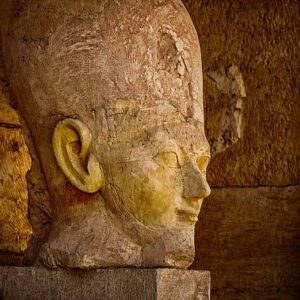A recent archaeological revelation has left researchers baffled and sparked heated debates. At a Maya temple site in Central America, a series of intricate stone carvings have been discovered that appear to depict objects eerily similar to modern handheld devices. These sculptures, estimated to be over 2,000 years old, challenge our understanding of ancient civilizations and their technological capabilities.

 The carvings, part of a larger set of Maya temple reliefs, showcase figures holding rectangular objects with fine details resembling buttons, screens, or antennas. The precision of these depictions, combined with their unusual resemblance to modern devices, has led many to dub these artifacts “ancient phones.”
The carvings, part of a larger set of Maya temple reliefs, showcase figures holding rectangular objects with fine details resembling buttons, screens, or antennas. The precision of these depictions, combined with their unusual resemblance to modern devices, has led many to dub these artifacts “ancient phones.”
The sculptures were uncovered during an excavation at an ancient Maya ceremonial complex. Among the numerous carvings of gods, rituals, and celestial symbols, several stood out for their unusual detail. These sculptures feature figures holding what appear to be tools or artifacts, with one striking carving showing a figure staring intently at a rectangular object held in their hand.
The object’s resemblance to a modern smartphone has raised questions. Could these be representations of tools the Maya used? Or are they symbolic depictions, part of their spiritual or astronomical practices?

 Archaeologists and historians are divided on the meaning of these carvings. Some experts believe these objects might represent ceremonial tablets or mirrors used in religious rituals. The Maya were known for their advanced knowledge of mathematics and astronomy, and some researchers theorize these objects could symbolize tools for observing or interpreting celestial events.
Archaeologists and historians are divided on the meaning of these carvings. Some experts believe these objects might represent ceremonial tablets or mirrors used in religious rituals. The Maya were known for their advanced knowledge of mathematics and astronomy, and some researchers theorize these objects could symbolize tools for observing or interpreting celestial events.
On the other hand, alternative theorists and enthusiasts propose more radical ideas. They argue that the carvings could hint at the presence of advanced technology within the Maya civilization or even contact with extraterrestrial beings. The idea of “out-of-place artifacts” in ancient history, such as the Antikythera Mechanism, lends some credibility to these speculations, though no concrete evidence supports them.
Critics, however, caution against overinterpretation, suggesting the resemblance to modern phones is purely coincidental and shaped by contemporary biases.

 From a cultural perspective, these carvings highlight the Maya’s exceptional craftsmanship and their ability to convey abstract concepts through art. Whether these objects are ceremonial or symbolic, their inclusion in such prominent carvings underscores their importance in Maya society.
From a cultural perspective, these carvings highlight the Maya’s exceptional craftsmanship and their ability to convey abstract concepts through art. Whether these objects are ceremonial or symbolic, their inclusion in such prominent carvings underscores their importance in Maya society.
The Maya were masters of architecture, astronomy, and art, creating a rich legacy that continues to captivate the world. These sculptures, regardless of their true purpose, offer a glimpse into their complex worldview and technological ingenuity.
While the mystery of the “ancient phone” carvings remains unsolved, they have reignited curiosity about the Maya and their accomplishments. Could these objects be tools lost to time, symbols of spiritual significance, or mere artistic interpretations? As researchers continue to study these sculptures, they might uncover more clues that bring us closer to understanding the extraordinary capabilities of this ancient civilization.

 A stunning discovery at a Maya temple reveals 2,000-year-old carvings resembling modern handheld devices, sparking debates about ancient technology and symbolism. Dubbed “ancient phones,” these intricate carvings feature figures holding rectangular objects with fine details like buttons or screens. Were they ceremonial tools, celestial devices, or something more mysterious? As researchers unravel this enigma, the carvings challenge our understanding of Maya ingenuity and possibly hint at advanced capabilities.
A stunning discovery at a Maya temple reveals 2,000-year-old carvings resembling modern handheld devices, sparking debates about ancient technology and symbolism. Dubbed “ancient phones,” these intricate carvings feature figures holding rectangular objects with fine details like buttons or screens. Were they ceremonial tools, celestial devices, or something more mysterious? As researchers unravel this enigma, the carvings challenge our understanding of Maya ingenuity and possibly hint at advanced capabilities.




